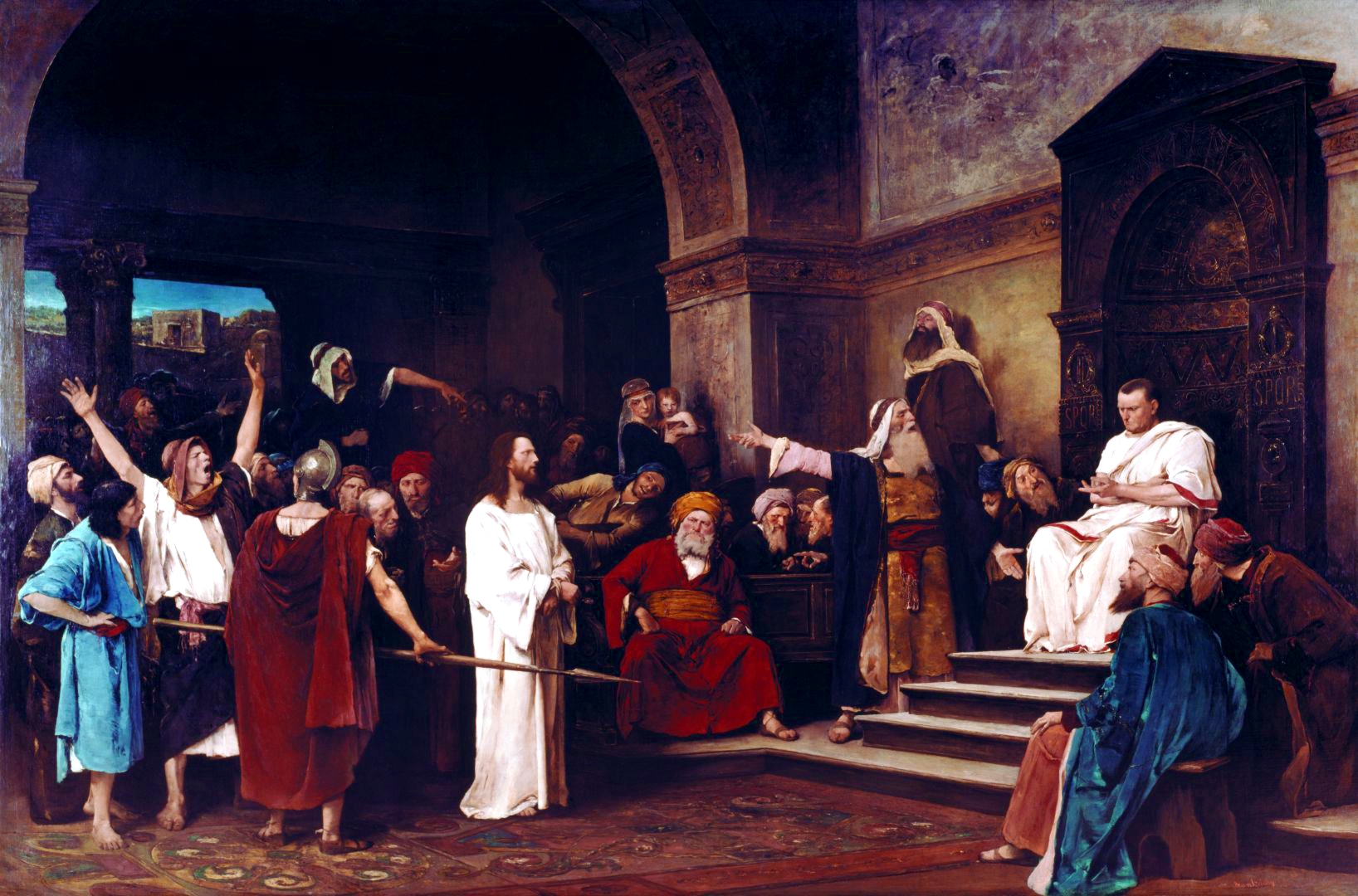For centuries, radical critics of the New Testament denied that there ever was such a man as Pontius Pilate. It was an easy argument to make, for until recently the only refences to Pilate in history were the New Testament writers, Jewish writers Flavius Josephus* and Philo, and a few other scraps, creeds, and legends from the church’s shadowy first century. It was not until the 1961 discovery of the Pilate Stone that the most stubborn doubters of Pilate’s existence were finally silenced.
Few realize how little we truly know about the minor historical characters of the past. We know Pilate’s name. We know that he briefly governed the Roman province of Judea, a little backwater section carved out of Pompey’s eastern conquests and ruled successively by client kings and governors proper, depending upon the whims of the Imperator. We learn a bit of his temperament from the Gospels and Josephus. We surmise he was from a wealthy family. After all, nobodies did not get to be Roman governors, even of the most backwater Roman provinces. Legend tells us his origins were in Spain.

This past week we discovered one more clue:
The name of Pontius Pilate, the Roman official who ordered the killing of Jesus, according to the Gospel, is mentioned in thousands of sermons every year and is familiar to countless people, but little is known about his life and work.
To the very short list of clues about Pilate as a historical figure, archaeologists have added one more: a 2,000-year-old copper alloy ring bearing his name.
The ring was discovered in the late 1960s, one of thousands of artifacts found in the excavation of Herodium, an ancient fortress and palace south of Bethlehem, in the West Bank. But it was not until recently that researchers, analyzing those objects with advanced photography, were able to decipher the ring’s inscription.
It reads “of Pilates,” in Greek letters set around a picture of a wine vessel known as a krater, and is said by archaeologists to be only the second artifact from his time ever found with his name**.
Do we learn much from it? Not really. If Pilate was really the Governor of Judea, he doubtless had several officials who “signed” official documents with similar rings. We could surmise that he was close to Herod — the ring was found in Herod’s palace, after all. Perhaps that fact is surprising, for Roman officials and local rulers were usually competitors, enemies, even. But these two established a friendship occasioned by Jesus’ execution, as revealed to us in Luke 23:12. So to the man who reads his Bible there is no surprise that such a ring might be found in the ruins of Herod’s palace.
In fact, it we already believe the Gospels, we learn nothing from this discovery at all. An archaeological find of tremendous import – it is, after all, only the second non-literary confirmation of perhaps the most famous Roman governor – becomes blasé. And that is perhaps an important lesson that Christians need to remember while reading breathless accounts of new “scientific” discoveries.
There are plenty of doubters and mockers out there willing to argue that men such as Pilate, or even such as Jesus, never existed. That they are fables. That they are but the literary expression of timeless archetypes of human longing. That the Gospels were written a century or so after this alleged Jesus allegedly lived, that the bible is a fairy story. But the truth will out, eventually.
We men of Christ need never fear what will be dug from the ground: the truth will support our faith. More importantly, we need even less fear of what is perhaps never confirmed by physical artifacts. For we do not base our faith upon what was left in the ground in ages past, but upon the One who arose out of it the first Easter morning.
The finding of a ring with Pontius Pilates’ name on it is interesting, to be sure. In fact, to a wannabe historian like me, it’s pretty cool***.
It’s important. But it is not nearly as important as the Man who stood before Pilate.
Without Jesus, Pilate is a nobody, a backwater ruler of a backwater province, lost in the mists of time.
But without that same Jesus, who was crucified under Pontius Pilate, who suffered, died, and was buried****, each of us is a nobody, lost in the mists of eternity.
* It was surprisingly easy to argue that, since Christian scribes preserved Josephus’ works, they snuck “biblical” characters into those works. What radical critics never bothered to ask was, if those biblical characters were not in Josephus originally, why would Christian scribes preserve his works in the first place?
** The other being the aforementioned Pilate Stone.
*** It definitely earns an entry in Josh McDowell’s famous Evidence that Demands a Verdict.
**** On the third day He rose again, according to the scriptures. Praise be to God.










5
Great article! The truth is that you can’t argue someone into the Kingdom of God. A similar problem exists with the Prophet Daniel. His prophecies are so accurate skeptics say Daniel was written after the Exile. So if we find hard evidence, the Bible is late forgery. If we can’t find hard evidence it’s wrong.